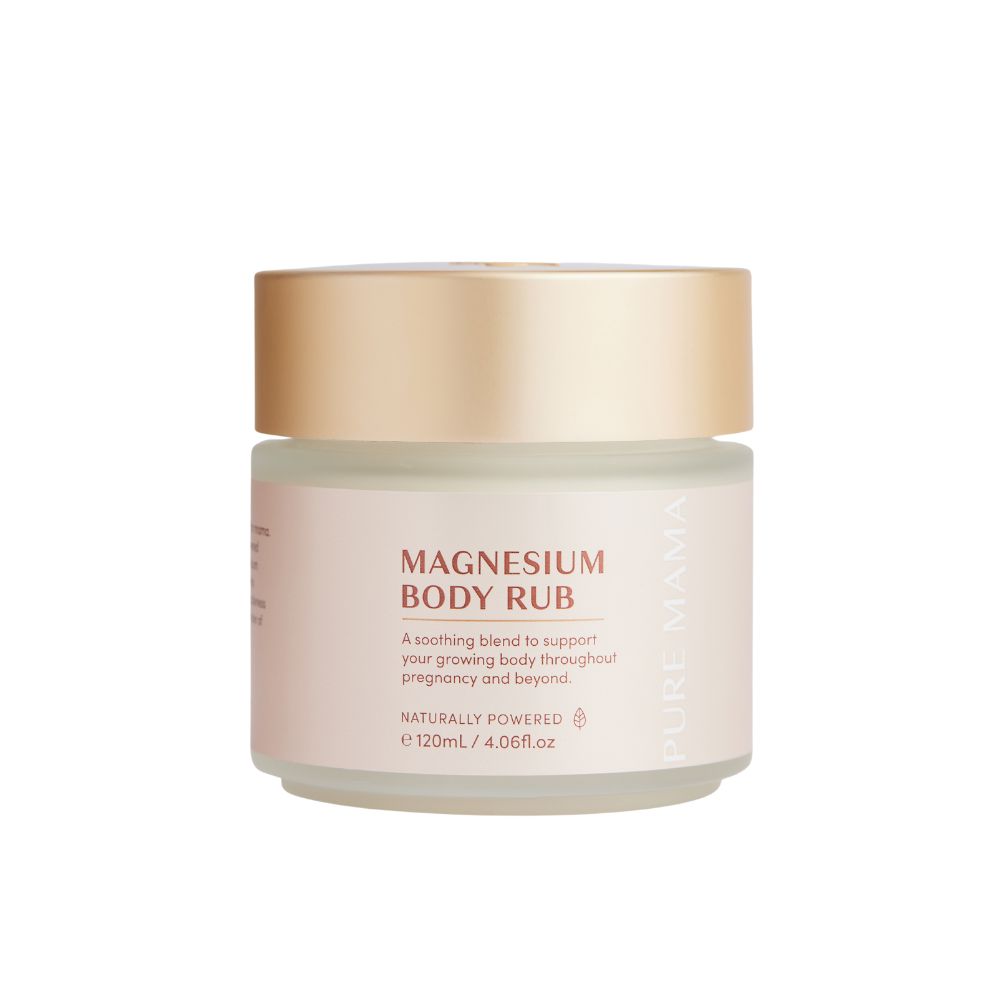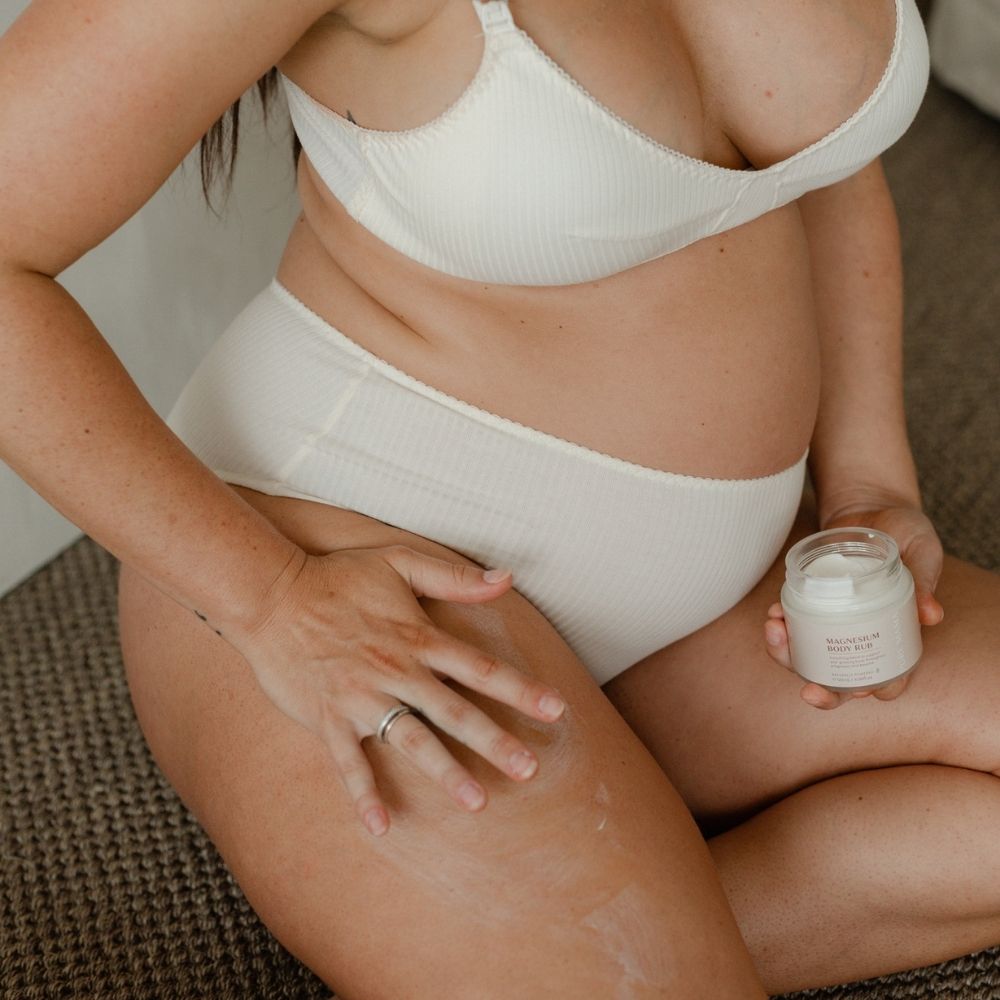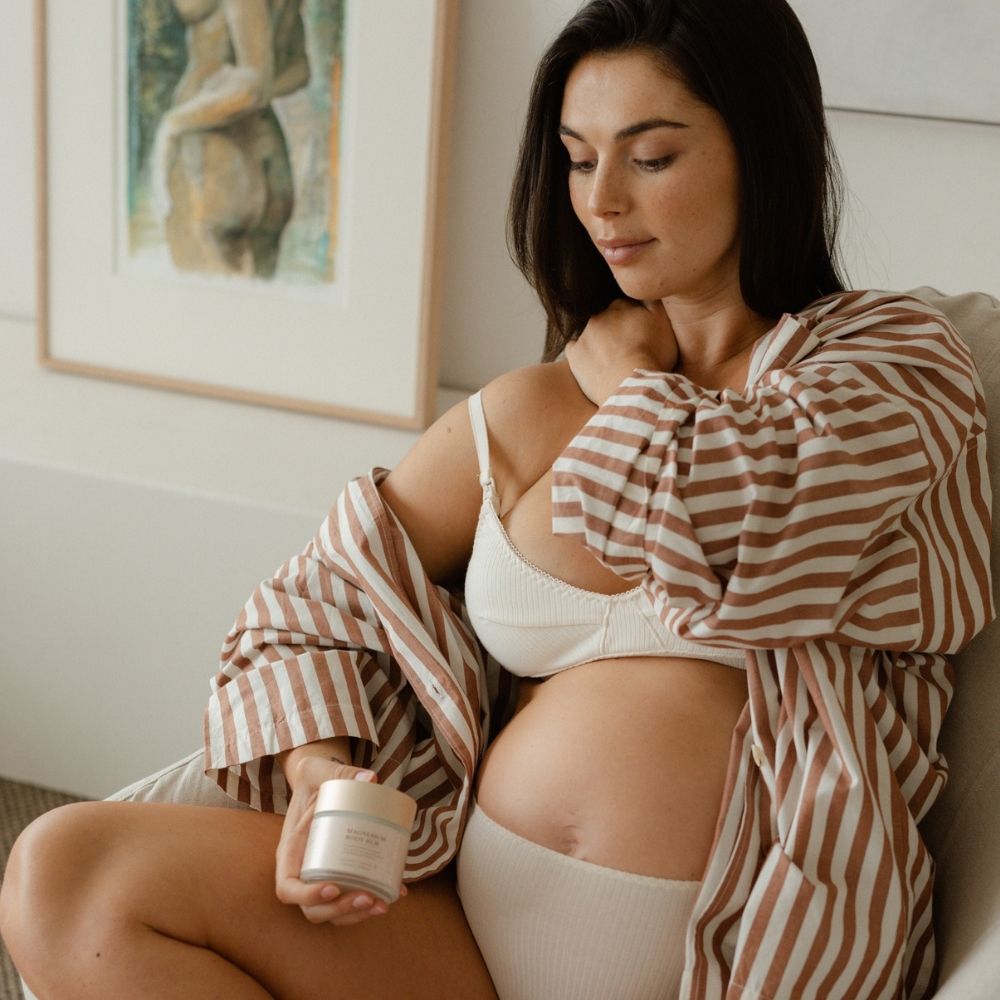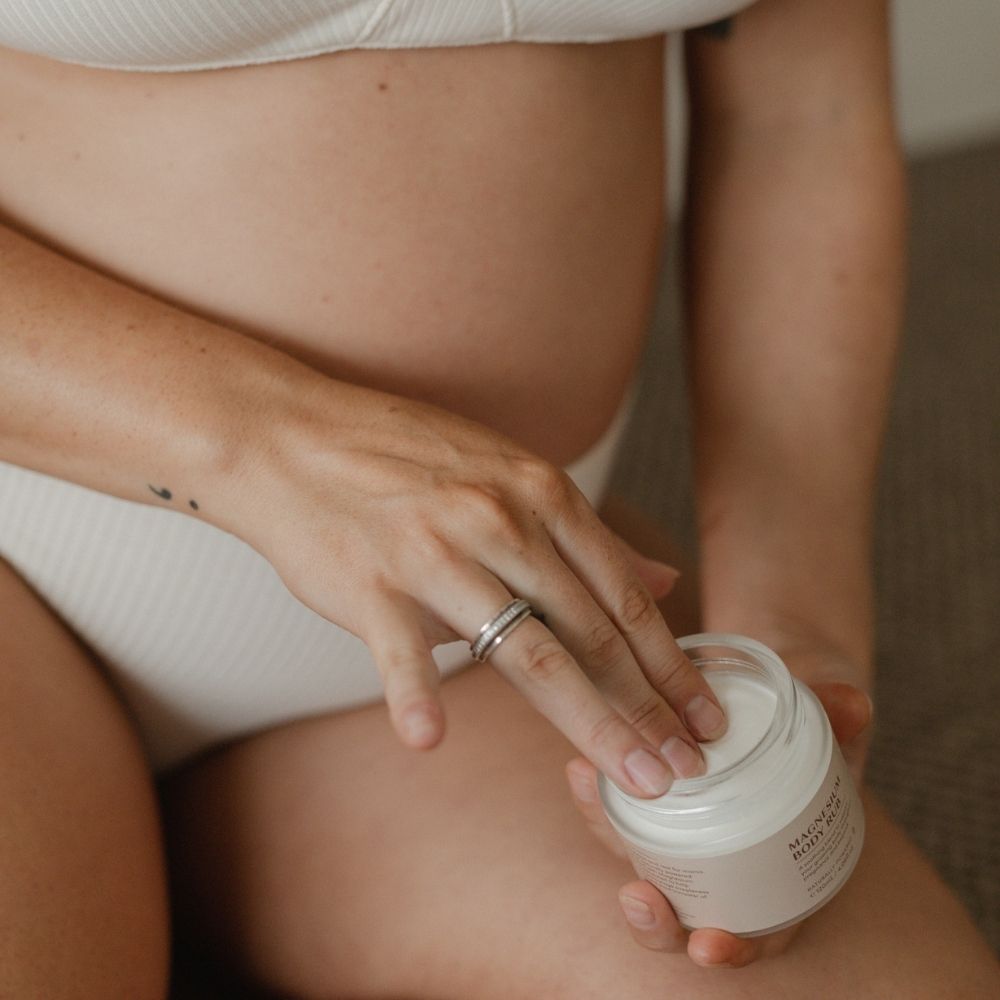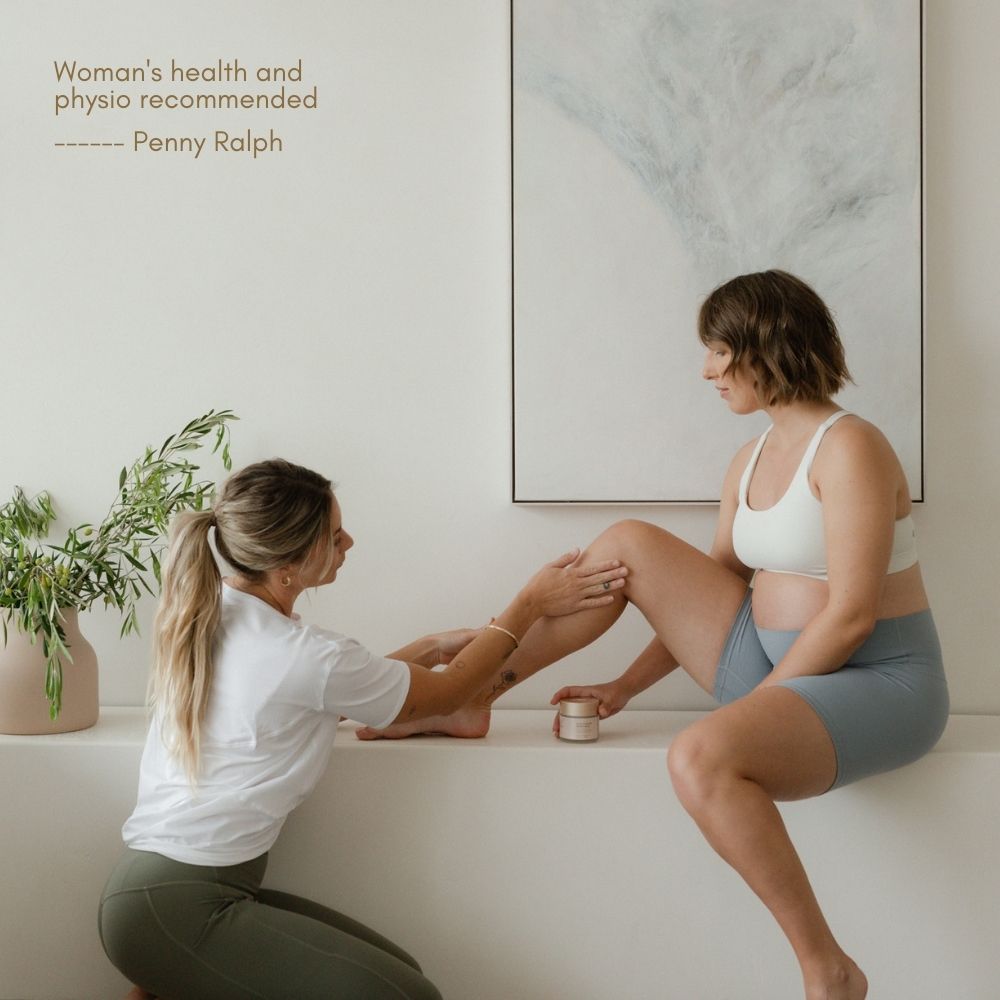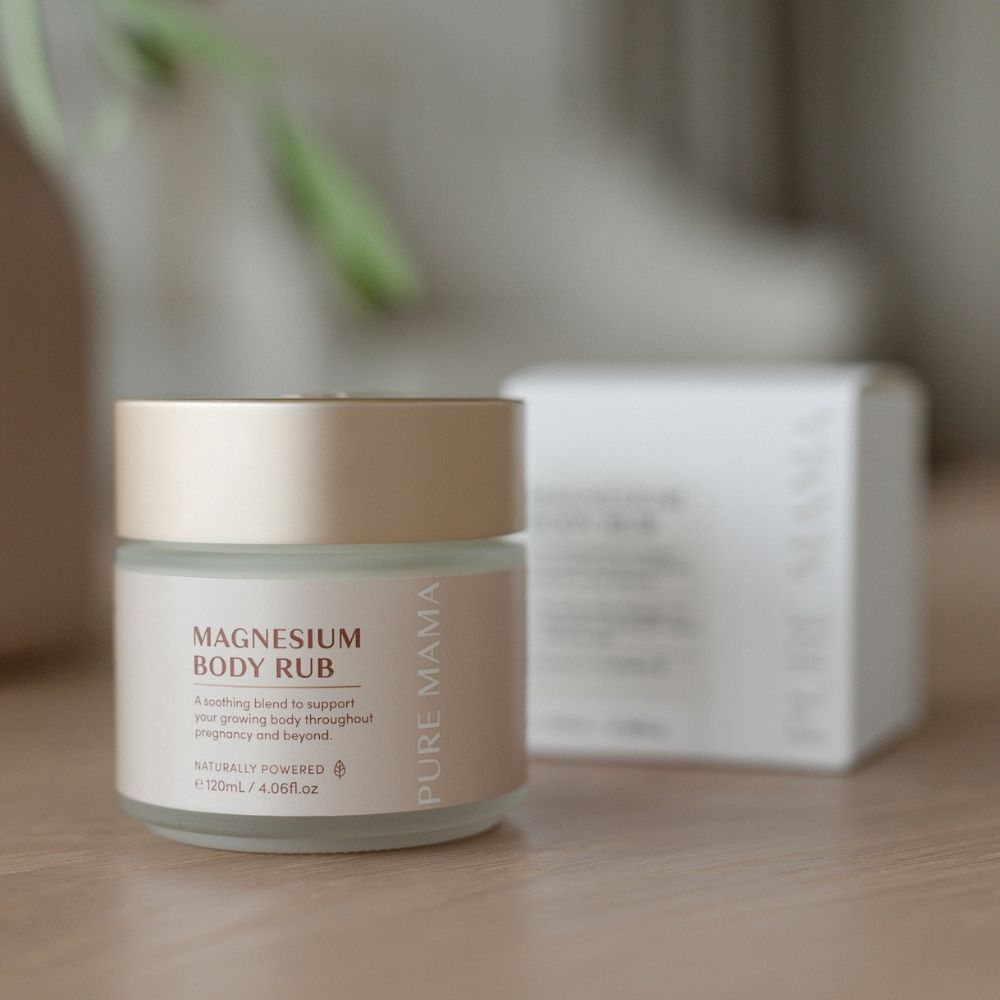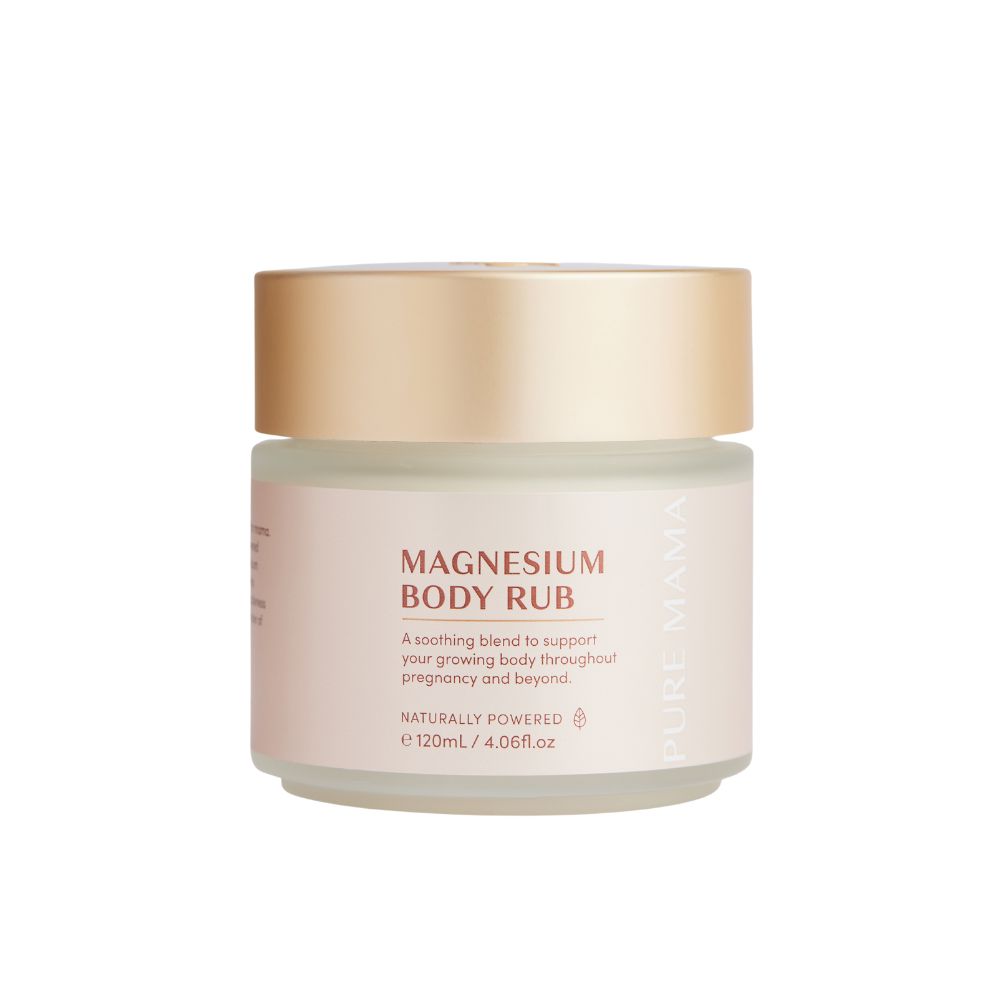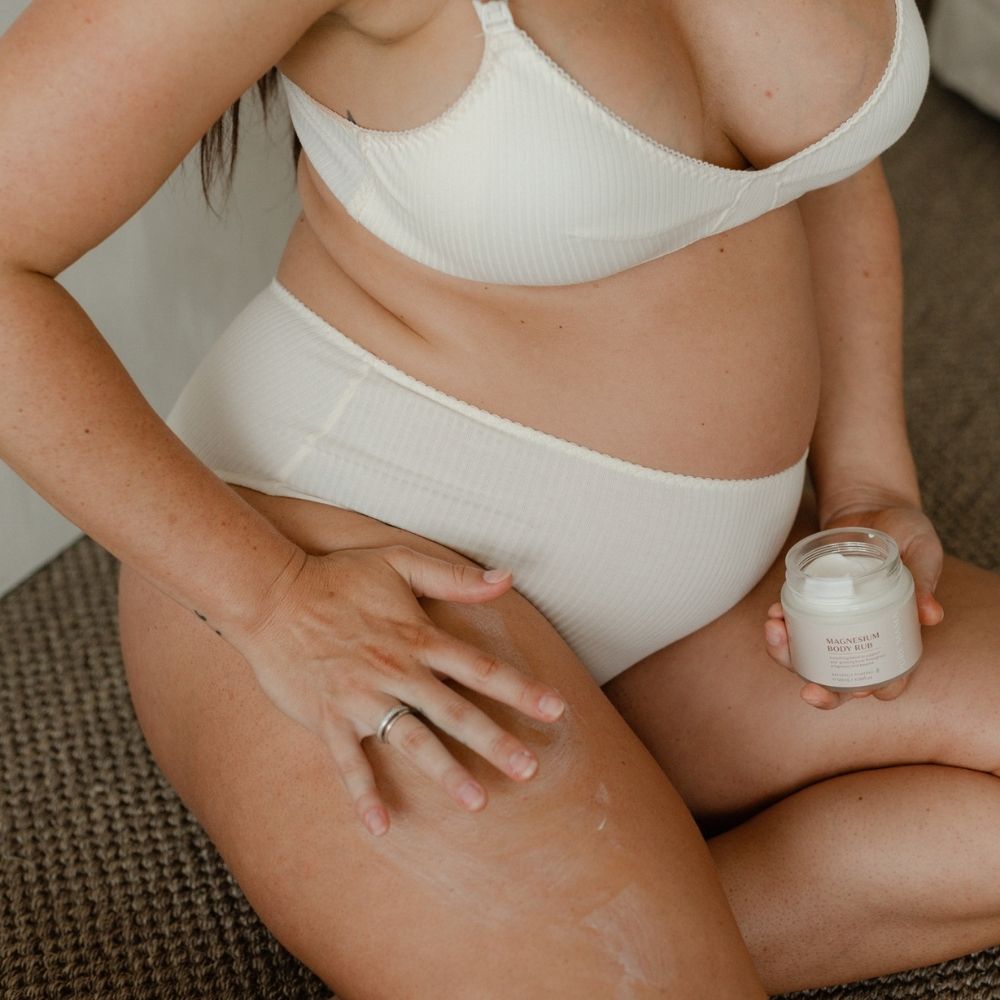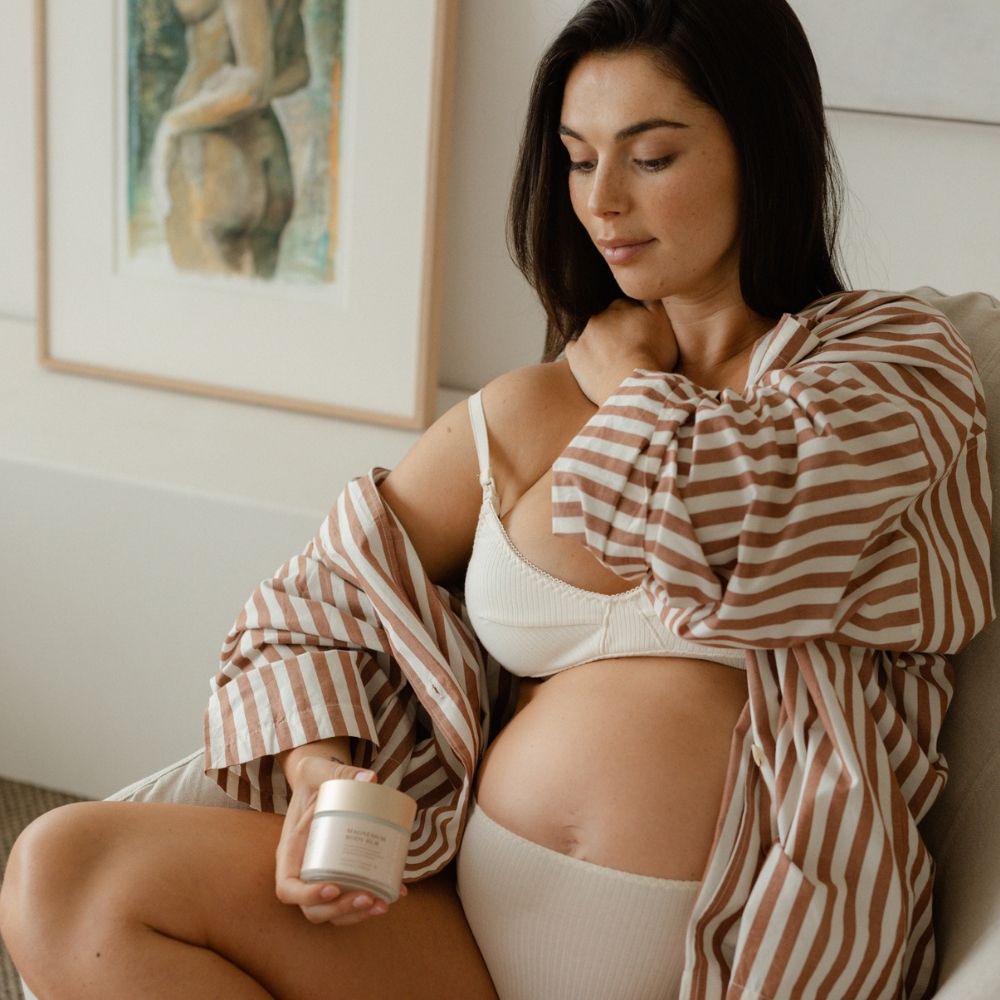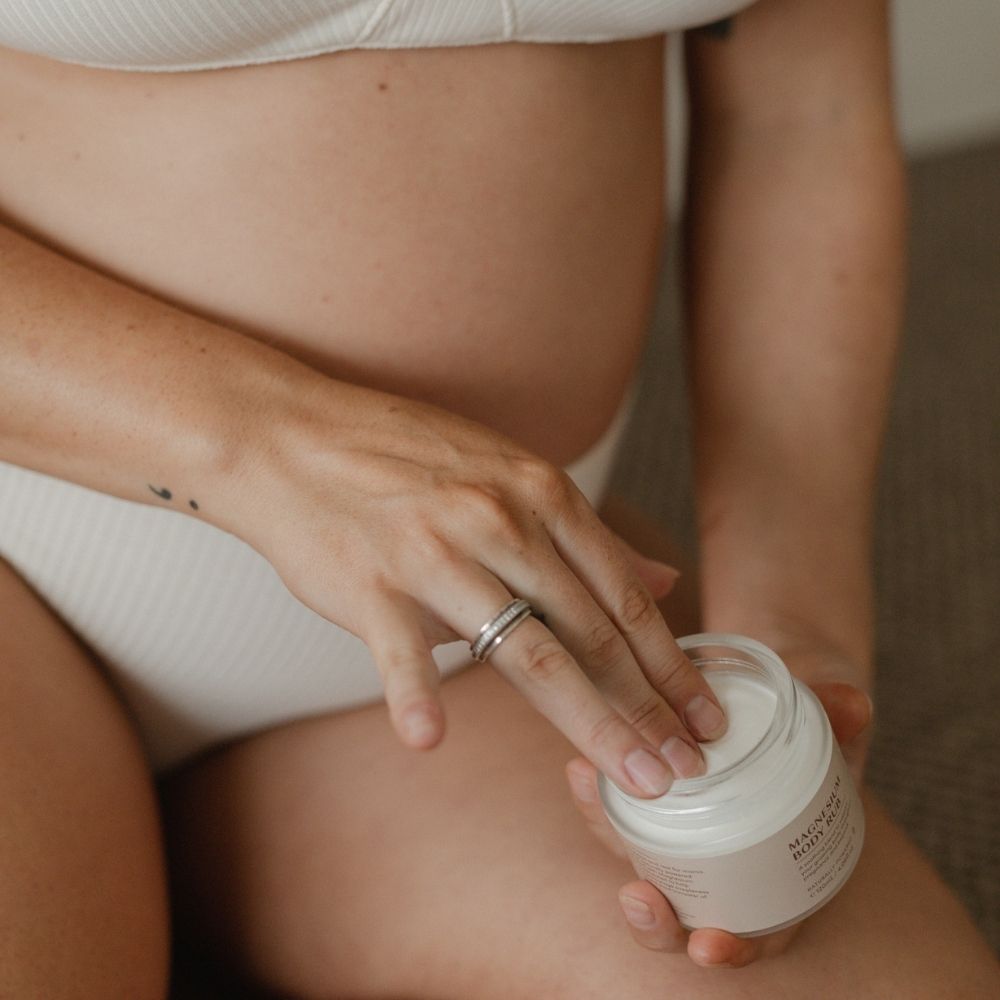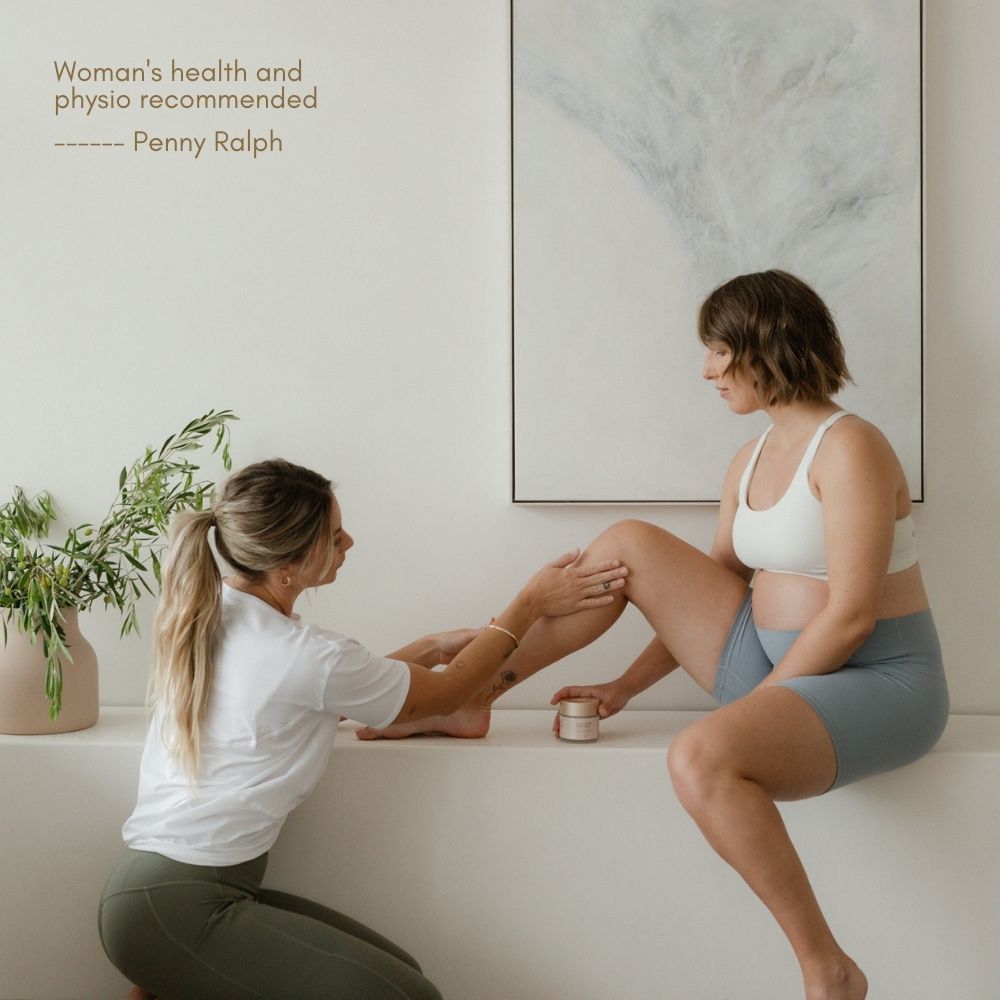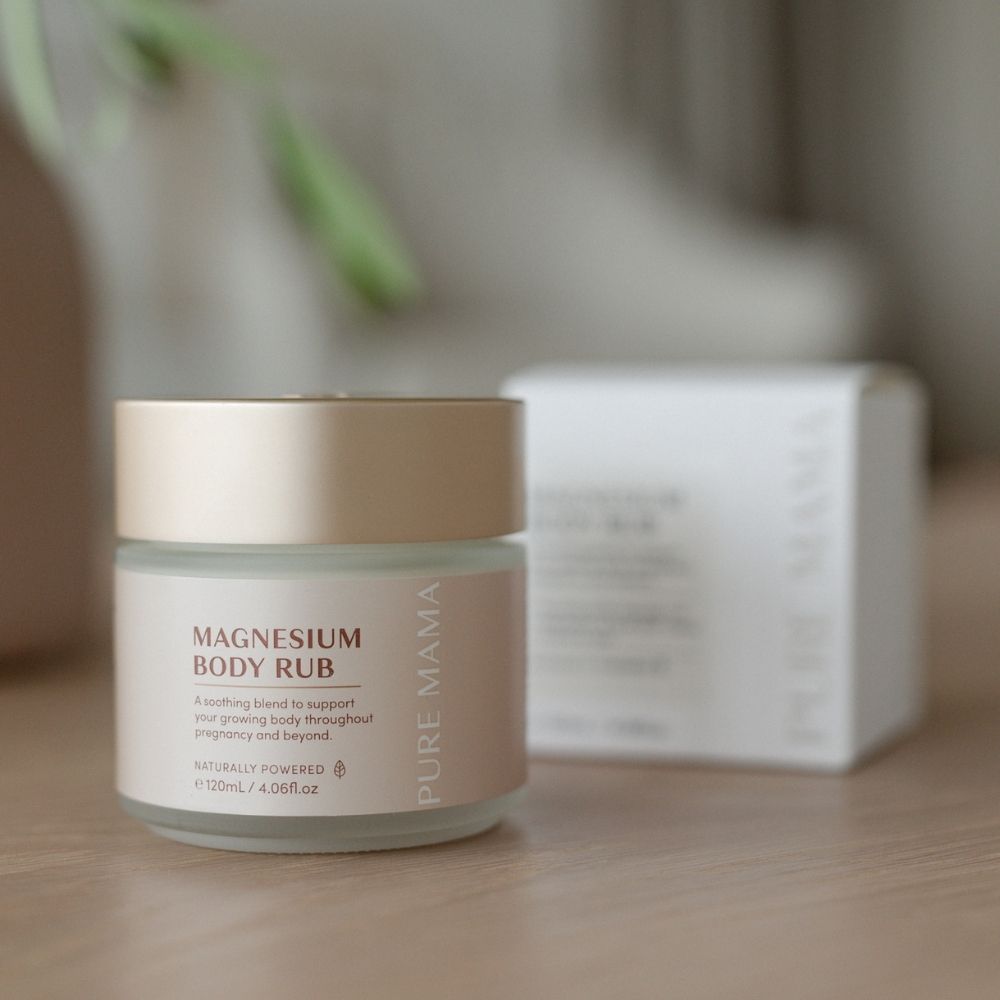Magnesium Body Rub
Magnesium Body Rub
SKU:PMMBR01
Clothing Prem to 18 Months
| Size | Age Guide | Weight | Height |
|---|---|---|---|
| Premature | Premature or Small Newborn | Up to 4Kg | Up to 55cm |
| Newborn | 0-3 months | 4-6Kg | Up to 62cm |
| 3 Month | 3-6 months | 6-8Kg | Up to 68cm |
| 6 Month | 6-12 Month | 8-10Kg | Up to 76cm |
| 12 Month | 12-18 Month | 10-12Kg | Up to 84cm |
| 18 Month | 18-24 Month | 12-14Kg | Up to 92cm |
Clothing 2 to 6 Years
| Size | Age Guide | Height | Chest | Waist | Hip |
|---|---|---|---|---|---|
| 2 Year | 2-3 Years | Up to 100 cm | 56 | 51 | 58 |
| 3 Year | 3-4 Years | Up to 105 cm | 58 | 53 | 60 |
| 4 Year | 4-5 Years | Up to 110 cm | 60 | 55 | 62 |
| 5 Year | 5-6 Years | Up to 115 cm | 62 | 57 | 64 |
| 6 Year | 6-7 Years | Up to 120 cm | 64 | 59 | 66 |
Beanie Size Guide
| Size | Head Circumference | Age Guide |
|---|---|---|
| Premature | 31-35 cm | Premature or Small Newborn |
| Newborn | 35-40 cm | Newborn |
| Small | 40-43 cm | 3-6 Months |
| Medium | 43-47 cm | 6-18 Months |
| Large | 47-52 cm | 18-3 Years |
Sunhat Size Guide
| Size | Head Circumference | Age Guide |
|---|---|---|
| Newborn | 37-40 cm | Newborn |
| Small | 40-43 cm | 3-6 Months |
| Medium | 43-46 cm | 6-12 Months |
| Large | 46-49 cm | 12-24 Months |
| Xtra Large | 49-54 cm | 2-4 Years |
Sleep Pods Size Guide
| Size | Weight | Age Guide | Measurement(Back to Hem) |
|---|---|---|---|
| Newborn | 0-6 kgs | 0-3 Months | 60.5 cm |
| Small | 0-8 kgs | 3-6 Months | 66 cm |
Booties Size Guide
| Size | Age Guide |
|---|---|
| Newborn | 0-3 Months |
| Small | 3-6 Months |
| Medium | 6-12 Months |
| Large | 12-18 Months |
Pretty Brave Baby
| Foot Length (mm) | Insole Length (mm) | EU | UK | Age | INT |
|---|---|---|---|---|---|
| 95-104 | 110 | 16/17 | 2 | 0-6m | S |
| 104-114 | 118 | 18 | 3 | 6-12m | M |
| 114-123 | 127 | 19/20 | 4.5 | 12-18m | L |
| 123-137 | 142 | 21/22 | 5.5 | 16-22m | XL |
Pretty Brave 1st Walker
| Foot Length (mm) | Insole Length (mm) | EU | UK | Age |
|---|---|---|---|---|
| 114-120 | 125-128 | 19 | 3 | 1 yr |
| 120-126 | 132-135 | 20 | 3.5 | 1-2 yrs |
| 126-132 | 138.5-141.5 | 21 | 4.5 | 1-2 yrs |
| 132-138 | 145-148.5 | 22 | 5 | 2 yrs |
Crywolf Swim Nappy
| Size | Length (waist to crotch) | Crotch Width (side to side) |
|---|---|---|
| 0-1 yr | 1-2 yrs | |
| 37 | 38 | |
| 14.5 | 15.5 |
Crywolf Rash Suit
| Size | Length (back neck to crotch) | Chest (arm to arm) | Waist (side to side) | Sleeve (neck to cuff) | Neck Opening(diameter) |
|---|---|---|---|---|---|
| 6-12 Months | 1 yr | 2 yrs | 3 yrs | ||
| 40 | 42 | 44 | 46 | ||
| 25 | 26 | 27 | 28 | ||
| 24 | 25 | 26 | 27 | ||
| 30 | 31.5 | 33 | 34.5 | ||
| 13.25 | 13.25 | 13.8 | 14.3 |
In stock
Couldn't load pickup availability
Overview
Overview
Giving mama a moment of relief and relaxation during pregnancy.
The Magnesium Body Rub has been expertly formulated using both Magnesium & SyriCalm™ to rapidly absorb through the skin to help ease discomfort and encourage skin suppleness during the second and third trimester of pregnancy. Specifically designed for pregnancy self-massage to promote relaxation, provide muscle relief through massage, and alleviate common discomforts experienced in the later stages of pregnancy.
- Magnesium and SyriCalm™
- Eases discomfort throughout the second and third trimester
- Soothes and hydrates skin
- Supports relief and relaxation
- Made in New Zealand
- Gentle on skin
This creamy blend features a subtle, natural fragrance of peppermint. 120ml per jar
Technical Specification
Technical Specification
User Guide
User Guide
Delivery and Returns
Delivery and Returns
- Delivery: Free within NZ on orders over $100 (excluding bulky items) or $8 standard shipping
- Returns: Accepted within 14 days of receipt with proof of purchase
- Some items are excluded from returns including sale items, hardware, car seats, prams, monitors and personal items - please click here for the full list.
Share this product
Recently Viewed Products
Related Blogs
Pregnancy Stages - Third Trimester
Can’t wait to meet you! Here’s what happens during your third trimester of pregnancy. You’re on the home stretch! It’s your third trimester, the final stage of your pregnancy, marked from week 29 to 40 (or even week 42 or 43, if you go over!) Anything uncomfortable that started getting niggly in the second trimester will continue, and probably get worse. You can expect a bunch of others to join the party, too! The good news is that it’s now possible for your baby to survive outside of the womb with some medical help, and every day that passes it’s getting stronger – something you’ll sure feel as it begins walloping you. This growing little person is now taking up more space, which pushes your internal organs up into your ribs, presses on your bladder and makes digestion difficult. You may get breathless and need to pee a whole lot more often. This is totally normal and will go away almost the second the baby is born. As your due date approaches, your body also begins getting ready for birth. The baby will start sitting lower in your belly, and your cervix will begin to thin and soften, which can feel like period cramps. You may also begin to feel Braxton Hicks, which are like tiny contractions and make your whole belly go rock hard. What happens to your body? This is the month of big physical changes on the outside for you-you'll look really, obviously pregnant, and begin to feel heavy and slow. Sleeping may also get harder – the weight of your belly means sleeping on your back is uncomfortable (and even dangerous), while side sleeping may feel more comfortable with a pillow between your knees and another under your belly. Here are some other things you may experience • Swollen feet, ankles, face or fingers. If you puff up suddenly or gain weight quickly, call your doctor – it could be a sign of pre-eclampsia, which is serious. • Constipation • Hemorrhoids • Tender breasts, which may begin making colostrum (pre-milk) • A popped-out belly button • Shortness of breath • Heartburn • Difficulty sleeping What’s going on in there? At 29 weeks, your baby is pretty much fully formed but is still busy getting everything into working order. Weighing in at about 1kg, and 38.5cm long, your baby’s soft bones are getting harder, with more calcium deposits. The brain is also fired up with neurons, gaining folds as it gets more complex. At 33 weeks, and kicking up a storm, your baby is 1.5kg and is losing living space by the day. Your baby is gaining about 200g a week, filling in that wrinkled skin The eyes can now open and close, but the lungs are still not quite ready yet. Even so, your baby has begun practicing breathing, by inhaling amniotic fluid. The fine covering of hair is now beginning to fall off, but many babies are born with much of it – and it falls off completely after birth. Your 36-week baby is counting the days until you finally get to meet. In the meantime, it’s in there packing on the pounds. The vernix, that waxy coating, is thickening and your active wee one is almost certainly pummeling you from within – you may even be able to tell whether that bump in your belly is a foot or a hand. At 40 weeks, your baby has organs that all work on their own and is technically ready to come out – although many babies stick around for two or three weeks longer. As your due date approaches, your baby will (hopefully) move its head down, facing backward. This is the ideal (but not the only) birth position. While you’re pregnant it can feel like a never-ending journey, and then suddenly you meet that little person you’ve been carrying for close to ten months. The range of emotions you might feel at this point is enormous – the first days with your new baby can be exhilarating, exhausting, heartbreaking and utterly wonderful all at the same time. You might suddenly see your pregnancy as a strange dream that happened to someone else! Getting ready for a baby? Click here to view our newborn essentials checklist.
Learn morePregnancy Stages - Second Trimester
Hello in there! Here’s what happens during your second trimester of pregnancy. The second trimester, marked from weeks 13 to 28, is often when pregnant women feel at their best. The major developments in your baby’s growth have slowed, which means the hormones (and all the horrible symptoms!) tend to ease now, too. Your baby bump will be popped out – so people stop wondering if you’ve just been eating too much cake – and you can also begin to feel a bit more reassured that your pregnancy will be viable. It’s extremely unusual to miscarry after week 12, which is why many parents wait until the second trimester to announce their impending addition to the family. Your baby is busy refining the developments made in the first trimester, which means you’ll still feel reasonably light and mobile. The second trimester is arguably the most exciting period in pregnancy. On top of feeling a lot better, you’ll also begin to see obvious signs of life. Some women feel movement as early as 13 weeks, but some don’t feel those first flutters until closer to 25 weeks. It all depends on your baby’s positioning, and where your placenta is. It’s in the second trimester that you’ll have scans that will tell you your baby is growing as it should, and, if you like, what sex it is. While the external sex organs are more clearly male or female now, scans can get it wrong – it’s not unheard of for parents to take home a little girl when they were expecting a boy (and vice versa!) What happens to your body? While your body is saving up all the really big changes until the third trimester, you’ll still notice a big shift. Here are some symptoms you may experience: Feeling achy in your back, tummy, groin, or thighs Stretch marks on your tummy, breasts, thighs, or bum Darkening of the areola (skin around your nipple) Development of the linea nigra – a line on your skin running from belly button to pubic hairline Patches of darker skin on your cheeks, forehead, nose, or upper lip Numb or tingly hands Itchy tummy, palms or bottoms of the feet. If this is combined with fatigue, nausea and yellowed skin, call the doctor – it could be your liver. Swollen feet, ankles, face or fingers. If you puff up suddenly or gain weight quickly, call your doctor – it could be a sign of pre-eclampsia, which is serious. The good news is that this is the trimester for the famous pregnancy glow. If you’re lucky, you might notice your hair getting lush and shiny, your nails growing faster, and your skin looking radiant. Not too bad right? Remember to treat yourself kindly – lots of good food, sleep and gentle exercise. You may notice feeling a little slower, or short of breath now, too – this is normal. Listen to what your body is telling you and try not to push yourself too hard. What’s going on in there? At 16 weeks, your baby is about 11.5 cm long and weighs a hefty 85 grams. This trimester is all about putting the finishing touches on its little work of art. The bones and muscles are still forming and the skin appears – it’s nearly transparent. Your baby will also be making its first poo! This is called meconium and develops in your baby's intestinal tract. The sucking reflex is working overtime, practising for the breast or bottle. Whether or not you can feel it, your baby is also getting frisky in there, kicking arms and legs, and swimming around in that still-roomy sack. At 20 weeks, the way your baby is measured changes. Before, your baby was measured from head to bum – it’s hard to measure those tiny legs when they’re all tucked up. At 20 weeks, people generally begin measuring foetuses from head to heel – so it can seem your baby has stretched from 15cm in week 19 to 25cm in week 20. Your baby’s skin is now covered by fine, feathery hair, called lanugo, and a waxy protective coating called vernix. Other hair comes in too – eyebrows, lashes and the first tufts up on top. Your baby can swallow, and also has working ears – you may notice your baby’s movements respond to sound. By 24 weeks, your baby is over halfway done – and babies born at this stage have even been known to survive, with a lot of medical help. There’s still plenty more left to do, though. Your baby needs to fatten up, and still has important elements developing: bone marrow begins to make blood cells, taste buds, footprints and fingerprints form, and sex organs are all present and accounted for. Your baby’s lungs are formed, but still don’t work. What happens next? Read about your third trimester.
Learn moreMotherhood: Beyond the Fourth Trimester
Beyond The Fourth Trimester - A Sustainable Approach To Health Once the first few months with your new baby have passed you might be feeling like the haze of those early weeks has passed. You also might not be there just yet, just as each baby is different so is each pregnancy and the subsequent postpartum period. This is why it is important to be mindful of not judging how well you are doing based on other mothers who might appear to be completely back to normal with a baby who sleeps all night. If you are still breastfeeding, many mothers report a drop in milk supply at this point often saying that they no longer feel like their breasts are as full. This is something I experienced with my first baby and thought it meant I was losing my milk supply. It is normal for the initial fullness and engorgement to diminish as your milk supply is more established at this point, and your body has adjusted to supplying what your baby needs. If you do ever feel concerned by this your Plunket nurse, local lactation consultant or the La Leche league are a wonderful source of support & encouragement. Once those exhausting early months have passed many of the mothers I work with are keen to start focusing on reclaiming their pre-pregnancy bodies and to start dieting and exercising. Focusing on good nutrition and consistent exercise is hugely beneficial and has many positive health impacts such as increased energy, better sleep, improved mood and changes in body composition. What is really important to be mindful of, is that changes in diet and physical activity are best to be done with an incremental approach to minimise the chances of under-fuelling yourself, drops in milk supply, injuries and adding too much pressure on yourself. It also allows you to build sustainable health habits that you are more likely to maintain long term. I always recommend an appointment with a postpartum trained physiotherapist. They can assess your posture for diastasis recti (tummy muscle separation) and guidance on pelvic floor exercises. Women who have had caesareans often think because they haven't had a natural birth they don't need to worry about pelvic floor exercises - this isn't the case, pregnancy still takes its toll on the body so re-strengthening the pelvic floor after carrying a baby is important for all mothers. Working with a personal trainer that specialises in postpartum exercise is a great idea. They can ensure your exercise technique is correct to avoid injury and set an exercise program that is suitable for your current fitness level that will be mindful of the changes that need to be made to a fitness program based on your requirements postpartum. When looking at dieting I always encourage my Mum’s take a non-diet approach to focus on improving health not through restriction but with healthy nutritional choices that improve their health status not diminish it. To achieve this we focus on a nutritional approach that has a strong focus on nutrient repletion to help the body to replete nutrients that were preferentially supplied to their growing baby. Focusing on a diet full of whole unprocessed foods is the foundation for this. Most women find that this approach is very empowering, it leads to better satiety and self-regulation of eating over restriction then binge eating. When it comes to improving your diet always aim for progress, not perfection, and most importantly enjoy your meals! Adequate protein intake is essential for tissue repair and rebuilding especially when exercising. Sources of protein include meat, chicken, seafood, eggs, legumes nuts and seeds. Protein also helps to keep you feeling full for longer. I use and recommend Clean Lean Protein powder for smoothies as it is perfectly safe for breastfeeding mums. You can use the discount code ‘mela’ to save 15% at nuzest.co.nz . Eating plenty of colourful vegetables and some fruits (eat the rainbow!) is important to supply essential vitamins, minerals, phytonutrients, fibre and carbohydrate. I aim to have three fist-sized servings of vegetables with lunch and dinner. It is important to supply yourself with some complex carbohydrate for energy and to assist with glycogen repletion after exercising. Some good sources are pumpkin, yams, kumara, and whole grains such as brown rice and quinoa. Don't forget to incorporate healthy fats with each meal. Fats have been demonised and avoided for so long that many people are not aware of how important adequate fat intake is for health. Dietary fat is essential for the absorption of many nutrients, production of certain hormones, the supply of energy and support of cell growth. Good sources of healthy fats include oily fish such as salmon, extra virgin olive oil, hemp seed oil, avocado, nuts and seeds. Lastly don't forget to drink your water! Aim for two glasses on rising then another 2 litres throughout the day and more when exercising. If you are a breastfeeding mum aiming to have a glass of water with each feed I find keeping a water bottle close by during the day and for those night feeds is a great idea - it’s thirsty work! Kylie Stowe @melawholefoods Postpartum Nourish Bowl Serves 1 Ingredients 120-150 grams of cooked sliced meat (or vegetarian alternative) 2 cups of salad greens 1 cup of an assortment of diced colourful vegetables 1 palm-sized serve of cooked complex carbohydrate (pumpkin, yams, brown rice, quinoa, kumara) ¼ - ½ of an avocado or 40 grams of Feta 1 tbsp of hummus 1tbsp toasted pumpkin & sunflower seeds 2 tbsp of dressing of your choice. Method Arrange all of the ingredients in a bowl, season, drizzle with dressing and enjoy! My favourite dressing is made with extra virgin olive oil, apple cider vinegar & wholegrain mustard. To change up the flavours you can coat your protein in different herbs and spices the one pictured is Moroccan chicken.
Learn moreExercising while pregnant, yay or nay?
Should you exercise while pregnant? Optimise health for you and baby by keeping fit For the majority of women, pregnancy will mean being uncomfortable, one way or another. Research shows that energy expenditure during pregnancy is at the upper limit of what humans can maintain physically — it’s hard work. It’s no surprise that lots of women find it difficult to keep on exercising throughout this – especially when you already have kids running you ragged. But exercise is important for you and your baby’s health. The American College of Obstetricians and Gynecologists (ACOG) recommend that expectant mums try to complete half an hour of moderate exercise every single day. Is it safe to exercise during pregnancy? Yes. In general, if you were physically active before your pregnancy, you can continue exercising as long as it’s comfortable. But – and this is a big but – pregnancy is not the time to exercise for weight loss. Your goals should be about maintaining your fitness and keeping your muscles in tune, so you’re ready for birth and those early newborn days. Benefits of exercise when pregnant Even if the goal of 30 minutes a day seems unobtainable, try to do something. Here’s why it’ll be worth the effort. You’ll: Be comfier: exercise helps to minimise backaches, bloating, swelling and constipation Stay healthier: exercise can help prevent and control gestational diabetes Have more energy Feel happier Cope with the weight of that big belly better, with improved muscle tone and posture Get better sleep Have an easier time in labour Find it easier to regain your fitness after the baby is born How to exercises safely during pregnancy If you already have an exercise regime, you may not be able to complete it at the same intensity as before. That’s to be expected. Here, we have a variety of options for low-impact fitness. Swimming – Low to no-impact, swimming lets you exercise without feeling the added weight of baby. You’ll relieve stress on joints, alleviate nausea and sciatic pain, and help to reduce water retention. If you’re not a swimmer, try aqua jogging. Just be gentle on yourself and don’t jump or dive into the water. Your baby can’t handle the bubbles that are created inside when you change altitude underwater. Walking – Probably the easiest and cheapest form of exercise is walking. You can do this right up until your due date, you can go as quickly or slowly as you like, and you don’t need any special gear. If you have kids already, walking to the park is a great way to fit exercise into your busy schedule. Running – If you’re already a runner, it’s fine to continue during pregnancy. Whether it’s on a treadmill or outside, whatever you’re used to and feel comfortable doing is fine. However, just be aware that your ligaments and joints will loosen during your pregnancy, which can put you at risk of injury. Group fitness classes – Low-impact workouts are great, from Body Balance to Zumba. They pump your heart rate up, get the blood flowing, and make you feel great. However as your body changes, so does your center of gravity. This can make balancing difficult and jumping can be challenging. Ask the instructor for alternative moves that will accommodate your pregnancy. Excercycling – Using an exercycle is great during pregnancy. It’s low-impact, you can pedal with as much resistance as is comfortable, and with little risk of a fall. You can do spin classes if you tell your instructor you’re pregnant and avoid pressure and standing. Martial arts, kickboxing, pole dancing – If you have been doing these activities for a long time already, it’s fine to continue doing them for as long as it’s comfortable. Avoid impact/pressure to the stomach and stop if you feel uncomfortable. HIIT (High Intensity Interval Training) – This can be very intense, so it’s not something you should be trying for the first time during pregnancy. If you’ve been doing it for a while, make some modifications and you should be fine. Avoid jumping and high-impact moves, and use lower weights than normal. Be careful with anything that involves balancing, and stop if you feel short of breath or dizzy. Outdoor sports – Give skiing and snowboarding a miss, because a fall could be catastrophic. Things like ice skating and horseback riding may be fine for the first two trimesters, but once your balance is affected they may become difficult. Pilates, yoga and barre – These are ideal pregnancy exercises. The practitioner should be able to tailor them to suit your needs. Focus on your core, pelvic tilt and floor exercises, core strengthening and flexibility. Look for classes that can be adjusted for pregnant women, as these will require less balance, more breathing focus and appropriate strength exercises. Weightlifting – This is a great way to increase strength and tone. Use lighter weights for more reps and it may be more comfortable to use machines rather than free weights, to help control movements and limit injury. Exercises to avoid Most things are safe, as your baby is nestled in protective fluid in the amniotic sac. However you should avoid: High-impact exercise that you’re not used to Lying flat on your back, as this may put pressure on blood vessels and reduce blood flow Contact sports, such as rugby Skiing, snowboarding, ice hockey or gymnastics, where there is a high risk of falls Scuba diving, as the baby has no ability to avoid gas embolism Anything in high altitudes, as you are more at risk of altitude sickness Exercising in high temperatures, as you may overheat the baby Get moving, mama! If you’re pregnant, exercise is one of the best things you can do for your and your baby’s health. If you’re already active you can continue doing what feels comfortable, unless your sport of choice is high intensity or potentially harmful to baby. Do warmups and cool downs to give you time to adjust and take notice of how your body feels. Adapt exercises to lessen the impact on your body, but in general you can do what feels good. If unsure, please seek advice from your healthcare provider. Make sure you eat enough, drink enough water, and listen to your body. Give your baby the best possible growing environment and the best entry into this world.
Learn more

